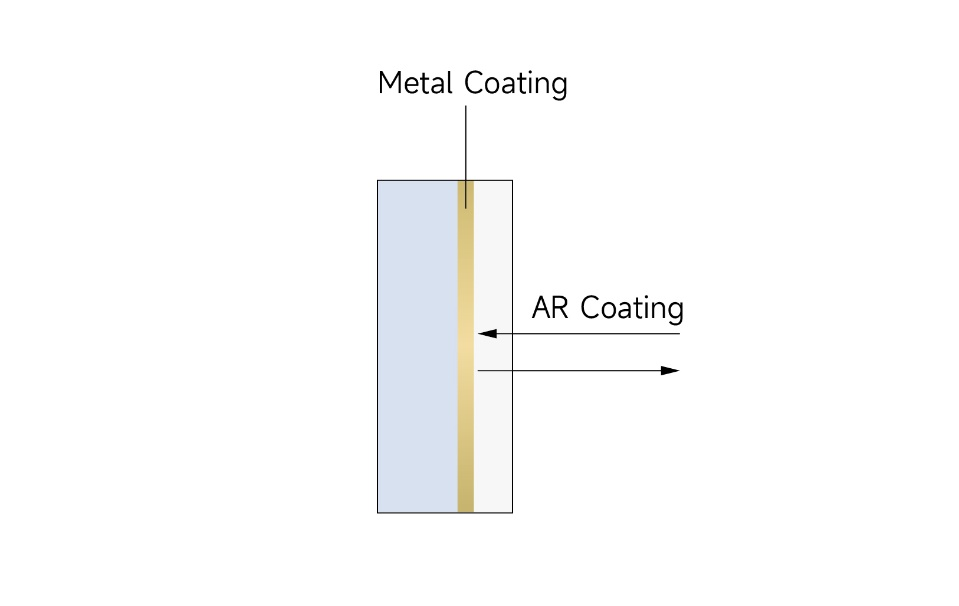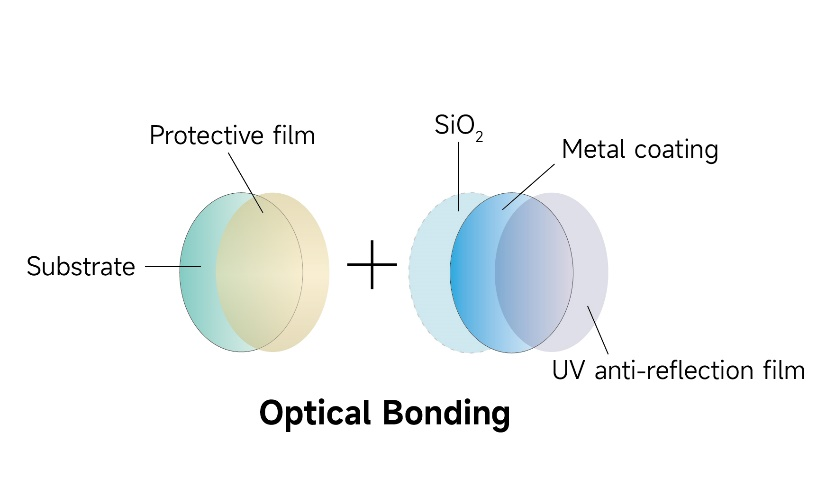In recent years, metal film surface protection is not only for appearance, but also prevents corrosion, increases strength and durability, and has attracted more and more attention. With the continuous development of optics in the ultraviolet field, it is particularly important to do a good job in surface protection.
Currently, there are two processes for making UV metal films on the market. The first is evaporation process. A fused quartz substrate is polished and then plated with a metal film layer on the surface, and a SIO2 protective film is covered on the metal film layer. The thickness of the SIO2 layer will not exceed 0.01mm. Although this process can effectively protect the metal against corrosion and oxidation, due to the very thin thickness of the film, it is easily destroyed and can easily cause damage during use, thus affecting the performance of the product. The second is to cover the surface of the metal film with a substrate through bonding. A fused quartz substrate is polished and then plated with a metal film layer on its surface. NOA61 glue is generally used to glue another fused quartz protective sheet on its surface, and the outer surface of fused quartz is coated with UV anti-reflection coating. The advantage of this process is that it has a simple structure and is easy to operate. However, the glue has a large absorption at ultraviolet wavelengths, which greatly reduces the efficiency of the product. If the product needs to be reflected multiple times in a complex optical path, it cannot able to meet requirements.

In order to solve these problems, DayOptics has launched an innovative method. On the metal film layer coated with SIO2 protective layer, a fused quartz protective sheet coated with UV anti-reflection film is covered for reinforcement and protection. This not only improves the corrosion resistance, but also increases strength and durability and protects the finish of the product.
*Technical principles
After polishing a piece of fused quartz substrate, the surface is coated with a layer of metal film and SIO2. The protective sheet is made of fused quartz, and one side is coated with SIO2 and the other side is coated with a UV anti-reflection film. Between the metal film layer and the protective sheet coated with SIO2, a deepened optical bonding is used to fully combine the two products. This can greatly improve the wear resistance of the product, making the product less susceptible to damages and having high UV reflection/transmission properties.

In order to improve the transmission and reflection of ultraviolet wavelengths, adhesive-free bonding process is mainly used.
"Adhesive-free bonding, also known as the adhesive-free contact, relies on intermolecular attraction to tightly bond the polished surfaces of two parts. After the two parts are bonded, a temperature baking process is used to fully stimulate the contact. The activity between surface molecules makes the combination closer."
With the improvement of technology, the UV metal film layer will show its application in more fields. For example, in the fields of optoelectronics, laser, aerospace and other fields, the precision requirements for components are demanding day by day. The properties of UV metal coatings will provide more reliable solutions in these fields. At the same time, in fields such as biomedicine and environmental monitoring, the protective performance of UV metal films will also play an important role in ensuring the stable operation and accurate data collection. As the performance requirements for optical devices continue to increase, the application fields of UV metal coatings will continue to expand.
This technology "A surface protective layer for ultraviolet metal film" is protected by DayOptics patent, No: ZL202122760732.9
Copyright © 2023 Hunan Dayoptics, Inc. Add:008, Jinshui West Road, Ningxiang Jinzhou New District, Changsha, 410600, Hunan, China
Business license Sitemap Technical support:Hnjing